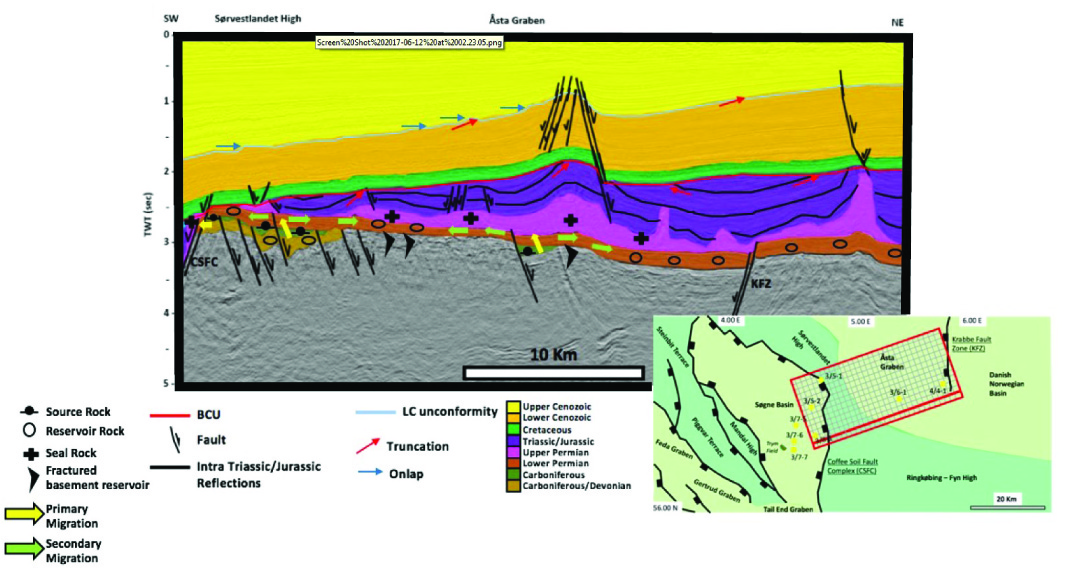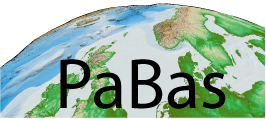
E-W interpreted seismic line showing the main Paleozoic petroleum system proposed for the southern North Sea, Sørvestlandet High area (Doudouh, 2017)
Source Rock and Migration in the Sørvestlandet area
The Mesozoic formations that are the main source rocks in the Central Graben (Mandal, Haugesund and Farsund Formations) (Glennie, 2009) are mostly immature in the Mandal High, Sørvestlandet High area. The Jurassic source rocks in the Søgne Basin are too shallow to have generated and expelled significant amounts of hydrocarbon (Ohm et al. 2006; Rossland et al., 2013).
Evans et al. (2003) indicates that Zechstein salt is a regionally barrier covering the entire area. In this regards, vertical migration within the Sørvestlandet High from Paleozoic source rocks to the Triassic/Jurassic and Cretaceous may be difficult. Based on this, the Paleozoic source rocks may, where the Upper Jurassic source rocks are immature, be the main petroleum system in the southern North Sea.
Reservoir
The different tectonic and stratigraphic episodes that have occurred in the Sørvestlandet High and Åsta Graben provides different hydrocarbon plays. The main reservoir rock in the Paleozoic is the Lower Permian Rotliegendes Group. The main trap of this system is the tilted bed of the Rotliegendes confined by the non-permeable salt and Jurassic shale to the east in the Søgne Basin. Nonetheless, like in parts of the Embla Field, the Devonian sand could also work as a reservoir rock. Doudouh (2017) have shown that there is potential underlain rocks to the Rotliegendes Group that may have potential reservoir properties.

